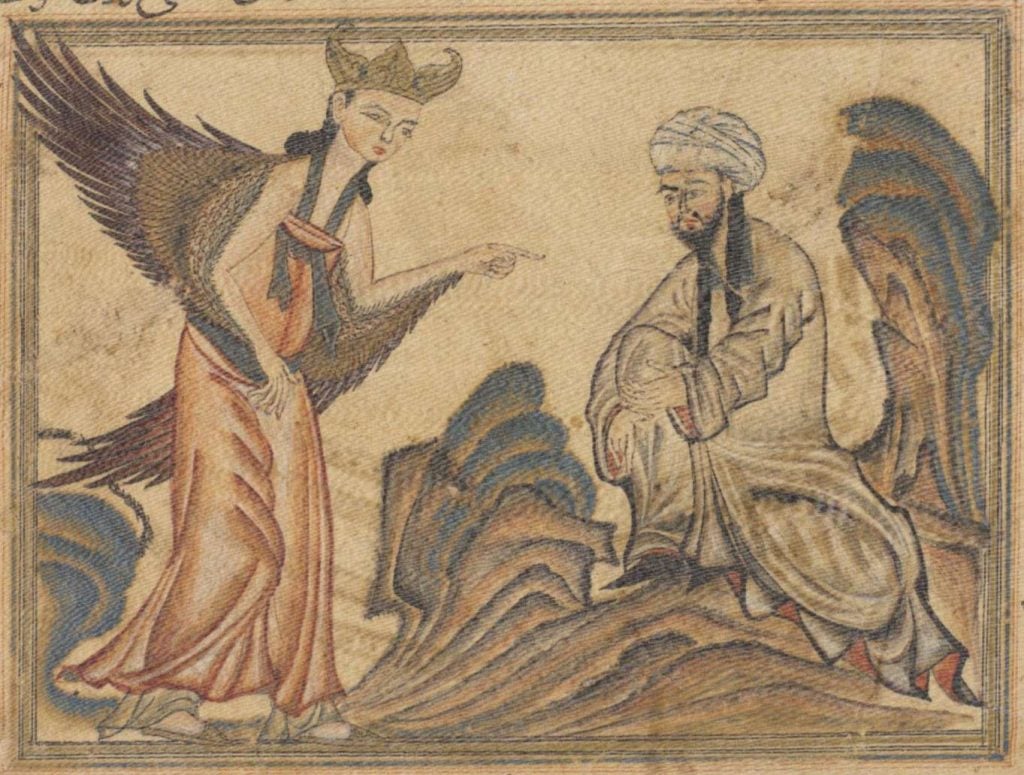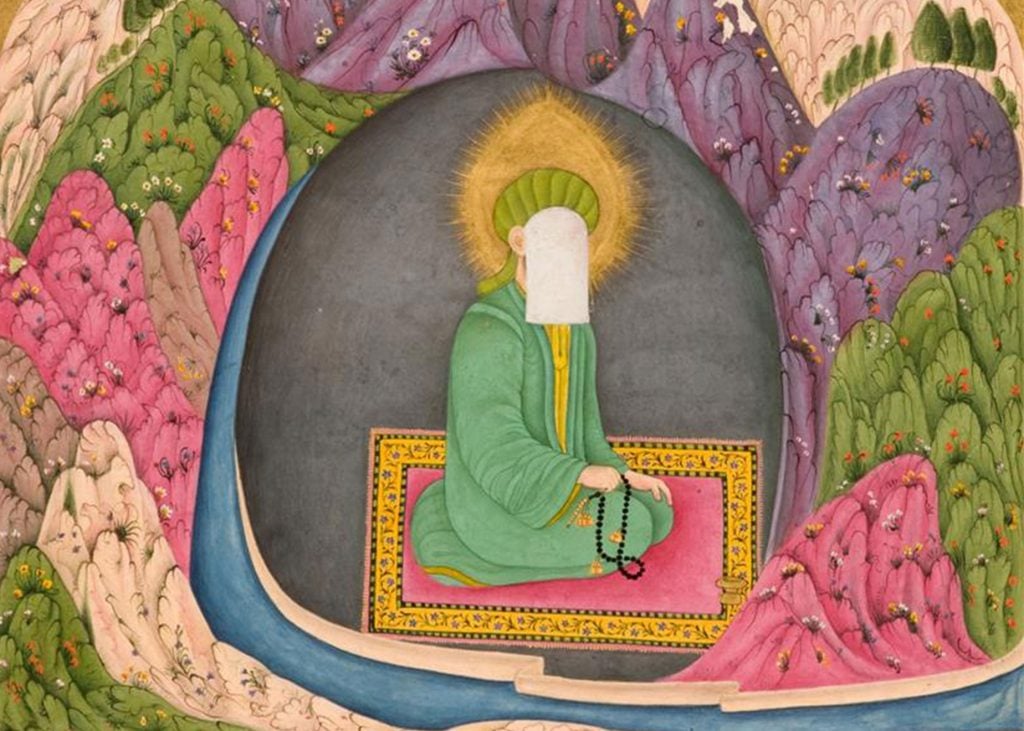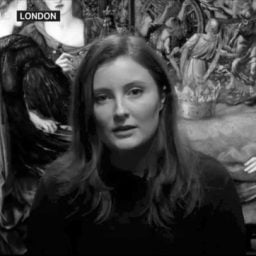The Muslim Public Affairs Council (MPAC) has published a statement urging the reinstatement of an art history professor who was fired from Hamline University in Minnesota after showing her class Medieval paintings depicting the Prophet Muhammad. The high-profile and heated dispute over her dismissal has pitted academic freedom against the risk of causing offense to Muslim students.
Erika López Prater included the works in an online lecture on October 6, 2022, making sure to deliver a content warning beforehand and giving students the opportunity to opt out of viewing the images. Depictions of Muhammad’s face are widely considered blasphemous and much of Islamic art, therefore, consists of geometric design and calligraphy. There are, however, rare surviving examples from an earlier tradition of painting the Prophet.
Weeks after the lecture, Aram Wedatalla, who is president of the university’s Muslim Students Association, reported the professor to the university administrators, after which the dean of students dispatched a university-wide email addressing the “undeniably[…] Islamophobic” incident.
In December, it was reported that Hamline’s associate vice president, David Everett, had chosen not to renew Prater’s contract for the current semester (she had been hired as an adjunct). His decision has been condemned by organizations that defend free expression, including PEN America and the Foundation for Individual Rights and Expression (FIRE).

The Prophet Muhammad receiving his first revelation from the archangel Gabriel by Rashīd al-Dīn. Collection of the University of Edinburgh.
Now MPAC, a national American Muslim advocacy and public policy organization, has also expressed “great concern” in a statement of support for Prater that calls for the university to reverse its decision and “to take compensatory action to ameliorate the situation.”
“The painting was not Islamophobic,” according to the statement. “In fact, it was commissioned by a fourteenth-century Muslim king in order to honor the Prophet, depicting the first Quranic revelation from the angel Gabriel.
“As a Muslim organization, we recognize the validity and ubiquity of an Islamic viewpoint that discourages or forbids any depictions of the Prophet, especially if done in a distasteful or disrespectful manner,” the council said. “However, we also recognize the historical reality that other viewpoints have existed and that there have been some Muslims, including and especially Shīʿī Muslims, who have felt no qualms in pictorially representing the Prophet (although often veiling his face out of respect).”
The council’s statement continues: “Even if it is the case that many Muslims feel uncomfortable with such depictions, Dr. Prater was trying to emphasize a key principle of religious literacy: religions are not monolithic in nature, but rather, internally diverse,” the council explained. “This principle should be appreciated in order to combat Islamophobia, which is often premised on flattening out Islam and viewing the Islamic tradition in an essentialist and reductionist manner.”
In fact, the statement stated, “the professor should be thanked for her role in educating students, Muslim and non-Muslim alike, and for doing so in a critically empathetic manner.”
An article published yesterday in the Oracle, the university’s student paper, claimed that in the wake of the story being picked up by mainstream media outlets, “a number of students who took part in a forum hosted by the Office of Inclusive Excellence were targeted with online threats and harassment.” Threatening phone calls also apparently have been received at other offices on campus, including Hamline’s Office of Public Safety.
“An email signed by [Hamline] President Fayneese Miller acknowledged the media frenzy on Dec. 31 and asserted that the administration’s actions were only to address students’ concerns,” the article also noted. “The administration has not publicly addressed the concerns for academic freedom on campus.”
In an update on the situation on campus, the article reported that “faculty members are preparing at least two letters in response to Lopez Prater’s nonrenewal, and the community collectively awaits the next response from the administration.”
On its website, FIRE has published a blog post alleging that Hamline is suppressing the debate over the firing of Prater on its social media channels. The post purports that although some of the replies that Hamline has chosen to “hide” on Twitter were clearly Islamophobic hate speech, other legitimate criticisms of the university’s stance on academic freedom have also apparently been “hidden” by the account’s administrator. FIRE also believes that dissenting comments on the university’s Facebook posts are being removed.
“Universities cannot claim to foster a culture of free expression when they’re sanitizing their social media feeds and shutting down discussions on important campus issues,” writes Alex Morey. “What message does it send to students and faculty about tolerance for dissent if the university is busy scrubbing criticism from public view?”
Representatives for Hamline University did not immediately respond to a request for comment.
More Trending Stories:
French Archaeologists Make ‘Unprecedented Discovery’ of What May Be the Remains of a Roman-Era Mausoleum
A Minnesota University Is Under Fire for Dismissing an Art History Professor Who Showed Medieval Paintings of the Prophet Muhammad
English Quarry Workers Have Struck Elizabethan-History-Lover’s Gold With the Discovery of a Rare 16th-Century Ship
Russian Cyber Attacks Disrupt Banksy’s Print Sale Benefiting Humanitarian Efforts in Ukraine
OxyContin Heiress Madeleine Sackler’s Forthcoming Film, About Healing From Pain and Grief, Sparked Objections From Some of Its Crew
Artist Anton Van Dalen Takes Us Inside His East Village Studio, Where He Rears Pigeons and Paints Them Into His Work
Pussy Riot’s Nadya Tolokonnikova Gets Her First Solo Show at Jeffrey Deitch, Where Attendees Are Instructed to Wear Balaclavas










